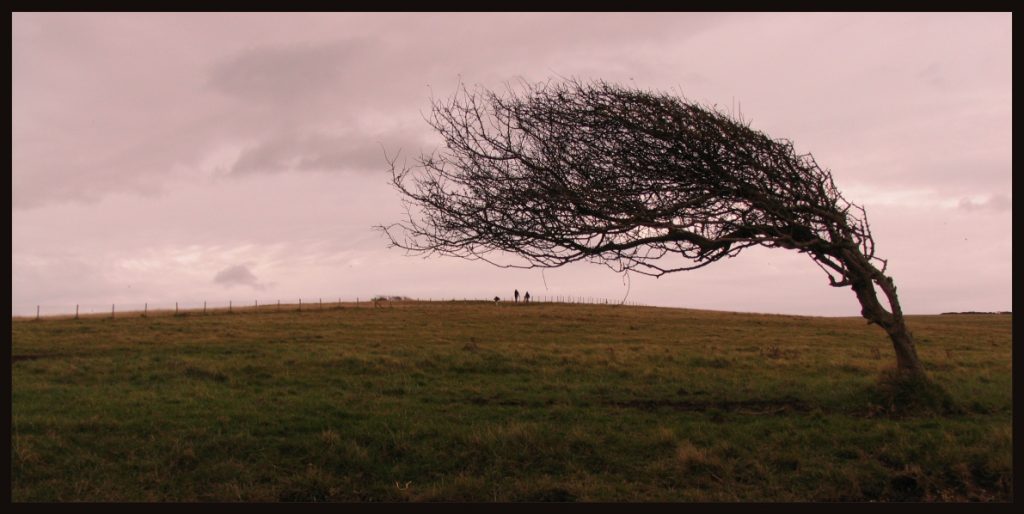
Mark Thompson
Co- Founder
Holos Change Ltd

Co- Founder
Holos Change Ltd

Don’t get me wrong, resilience is of course a good thing. It matters that we can bounce back. It’s important that we don’t learn to fail, and that we exercise courage, and so on. Strength of heart, strength of character: all good. In life terms, if I personally was not resilient, I would be dead. You may sense there is a big “however” attached to this.
The definition of resilience has two main parts: 1. The ability of a substance or object to spring back into shape, and 2. The capacity to recover quickly from difficulties or toughness.
Working in corporate change as I do, I am becoming increasingly mistrustful of the way in which the word ‘resilience’ is being used. First, it came about because corporations are piling so much change on change, onto smaller and smaller populations dealing with 2-3 jobs per person, that workforces are becoming burned out, requiring them to look again at the culture and atmosphere leaders are creating. The fact that resilience began to be a subject worth discussing is actually a response to conditions brought about by the leaders themselves. Second, it worries me that the subject is now so prevalent, in such demand, that whole business propositions are being built around it. People who work like me in change and leadership are developing entire frameworks to deal with stress, anxiety, and wellbeing. We are beginning to put resilience at the heart of such systems, and are smiling as if we have the answer. “Yes, yes, the proper response to change is resilience.”
Not only are we in danger of legitimising the wrong response to change by creating an industry to support it, but we are also manifestly changing the right definition of resilience. If we look at the tree in the image above, it could be said to be resilient – it has learned to bend to the winds that buffet it on the mountain upon which it resides, but it has become so permanently affected by this pressure that it no longer ‘bounces back’. It is unnaturally deformed to fit that space. This is not resilience; it is permanent adaptation to harsh conditions -it is hardy. Definition of hardy? “Enduring difficult conditions”. I fear that we (‘we’ being my colleagues in the consulting business seeking fair remedy to these conditions, as well as company executives responsible for the people they employ) are unconsciously, and probably with good intentions, using resilience as a method to cover the lack of skill and foresight so prevalent in corporate life. The response has been – “well we’ve got do something for these poor people”, and so we alight upon resilience as if it has the power to mitigate the hurricane.
It is costing you. It is costing you the lost income and inefficiencies of a poor culture. It is costing you the expense of resilience training and difficult, damaging change processes. It is costing you resignations and the expense of having to recruit again. It is costing you sick days and long term health benefits. In extremis, it is finally costing you human lives.
Resilience is not the skill we are looking for. Excellent leadership and better change practice are the skills we are looking for. Trouble is, many leaders are themselves already so bent double that they no longer recognise what they looked like when they could ‘bounce back’. Consequently anyone who cannot work permanently under too much stress for too long is not now resilient enough. Faster and faster working practices, along with too much focus on the short term quarterly balance sheet, along with uncertainty in the permanently VUCA world we have now created, along with a harsh, sometimes mentally violent approach, make for conditions in which we have to become metaphorically bent double in order to deal with that permanent blasting wind.
The human condition is not built for such treatment. Our nervous systems are very complex and with many parts and sub-parts. There is the central nervous system, the peripheral nervous system, the sympathetic nervous system, the parasympathetic nervous system, and the autonomic nervous system, amongst others. The critical dimension is the production in our bodies of the chemical cortisol, which is a stress response. Our evolution has required us to spend long periods at ease and in repose, with intermittent, sudden bursts of danger such as hunting or escaping predators. Think savanna lions and you get the picture. Cortisol is produced when we need to run faster, think quicker, or other such needs attributed to fight or flight conditions. We are not built for long periods of being on ‘permanent watch’, or spending years in conditions that are not psychologically safe, because it produces in us too much cortisol. Many researchers link the rise of conditions and responses such as Chronic Fatigue, obesity, diabetes, and of course heart attack and heart failure (amongst others), to this casual factor of stress on our permanent condition.
Resilience is not the skill we are looking for. Resilience over too long a period becomes hardiness, in which case we are simply enduring those conditions. What we are looking for is a more long-term outlook; one that is not dominated by the quarterly statement and attendant fluttering up and down the markets. We are looking for well led, thoughtful and directed businesses that anticipate the future and put into place adaptive principles that enable foresight and understanding across their organisations well in advance of physical changes. We are looking for an exponential increase in the real function of leadership, which is to bring people though change. Sorry to say, you cannot ‘manage’ change. To attempt to manage change is like attempting to put a halter on a bucking bronco – change is wild and chaotic, with many unforeseen consequences. You cannot manage a wild thing, you have to master taking care of it.
I call for those executives currently considering developing a practice of resilience in their business to think again. Consider instead the psychological safety of your employees, which is as important as their physical safety. You would not let them work with hazards to physical wellbeing lying around: so it is with mental ones. Think more long term, slow the pace down, stop pushing, and start pulling. Gather support. Create thriving conditions. Plant seeds. Water and nurture. Move the plant nursery from the mountaintop to the valley, and you will see what happens to the grove you wanted to plant.
It will become healthy, prime forest.
This is so true. As someone trying to influence culture within a large American IT corporation, this paragraph really resonated: “… it came about because corporations are piling so much change on change, onto smaller and smaller populations dealing with 2-3 jobs per person, that workforces are becoming burned out, requiring them to look again at the culture and atmosphere leaders are creating.” Thank you for these insights.
Spot on Mark